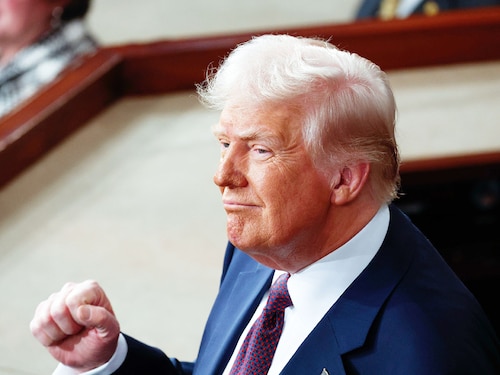Southeast Asia in a Trump 2.0 world
Trump's approach will have longer-term consequences for the international trading system, beyond the term of this administration


On Feb 1, President Donald Trump announced that the U.S. would levy tariffs of 25 percent on most imports from two of its closest trading partners—Canada and Mexico—along with an additional 10 percent on Chinese goods, which had already been subject to higher tariffs than the rest of the world. While the tariffs on Canada and Mexico have since been put on hold for another month, many other countries—especially those who export extensively to America—are bracing for the possibility of fresh tariff threats in the months ahead.
The response thus far has been swift and indignant. China, Canada, and Mexico announced retaliatory tariffs of their own, with duties ranging from aluminum and beverages, to coal and dairy, to equipment and fruit and gas (a litany that, literally, follows the letters of the alphabet). Trump—having come into office on a wave of optimism about how his leadership would slash the size of the U.S. government and bring about a slew of tax cuts—has, in one fell swoop, effectively rolled out a massive tax hike on American consumers.
While it is impossible to forecast which countries and goods would be subject to future tariffs from the mercurial administration, there are a few inferences that we can draw about how things might play out.
First, this isn’t Trump’s first rodeo, which means that the team is more acculturated to how their objectives may be realized. This is probably why tariffs were chosen as the go-to policy instrument so early in the term: since the executive holds the right to negotiate on trade, it is far easier to score such early “wins," as opposed to securing congressional passage on matters like fiscal expenditures, deregulation, or healthcare reform.
Second, despite the initial bombast, this hyperbolic stance is likely to be tempered down over time. As a dyed-in-the-wool negotiator, Trump intuitively understands that extracting concessions requires bold signals of commitment. Moreover, since he clearly believes that access to the U.S. market is a much greater prize than any efficiency losses that could arise from tariffs, his negotiators will hold the strong hand. We can therefore expect smaller economies to be more likely than not to yield—at least in large part—to many of the administration’s over-the-top demands.
Third, this approach will have longer-term consequences for the international trading system, beyond the term of this administration. This will be felt directly, in terms of frayed relationships among trading partners, which could well prompt a rethinking and reconfiguration of traditional supply chain relationships. And once rejiggered, there will be resistance toward rewriting them, even after the storm has passed.
There will also be indirect effects. Potential economic alliances will be far harder to pass in future. Countries will be more likely to question the value of even commencing negotiations with a counterpart, when contractual terms are unlikely to be respected. Trade will, inexorably, go on, perhaps with diminished U.S. involvement. But the road ahead for international cooperation will be even rockier than before.
For starters, it is useful to recall that the region has historically been heavily reliant on open borders for goods and commerce. As the rest of the world turns more inward, the region’s ability to do business will be compromised. This isn’t just a matter of how prices might well trend higher in a less liberal global trading regime. Since so much of the region relies on a production chain model, the goods produced by any given country are likely to be far less valuable if the final product (say, the computers and cellphones assembled in China) are subject to tariffs. This would be the case even if they—or the goods they export—are not directly subject to tariffs by the United States.
It will also not be surprising if the region’s economies would themselves become more guarded in terms of their economic openness. As other regions like the United States, European Union, and China begin to be more aggressive about export controls, the region’s economies—which have frequently been intermediate stops—may be compelled to throw up controls of their own, lest they become the subject of sanctions, too.
Finally, we should expect there to be a hit to growth and inflation prospects for the region. Admittedly, if new tariffs are a one-off affair, this will also be the case for any associated prince increases. The impact of inflation will be transitory. But perhaps more damaging will be how elevated trade and investment policy uncertainty could erode the region’s already-fragile growth prospects, leading to a reduction in economic vitality that will go above and beyond reduced efficiency.
Jamus Lim is an associate professor of economics at ESSEC Business School, Asia Pacific, and a research associate of the business school’s Institute for Geopolitics and Business.
First Published: Mar 06, 2025, 11:03
Subscribe Now